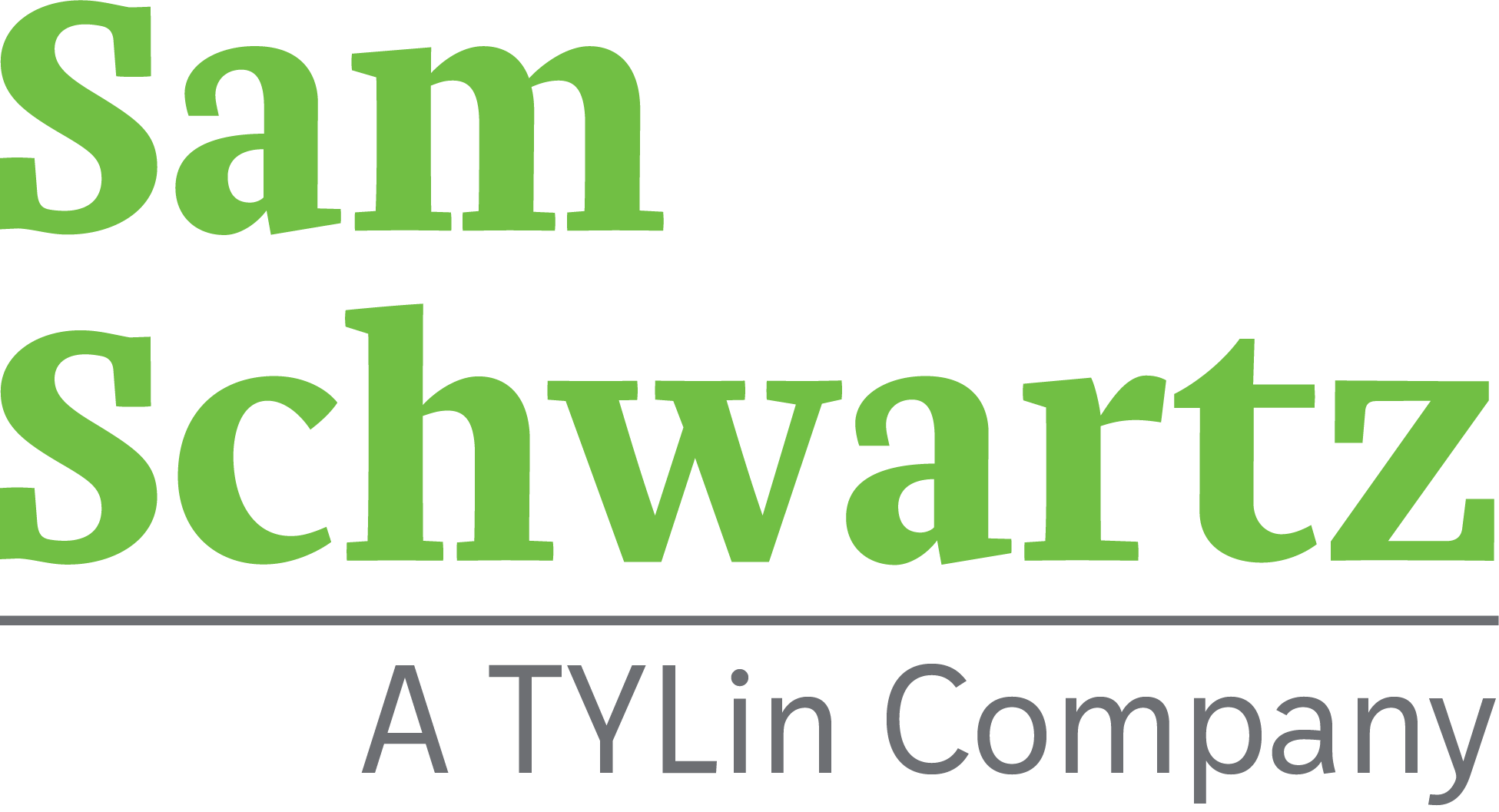Welcoming Students Back: safe arrival and dismissal plans as schools reopen
This post is part of our comprehensive look at how COVID-19 is reshaping the mobility landscape. For more original research, project work, and thought leadership from the Sam Schwartz team, visit the COVID-19 Response + Analysis center.
By Kelly Conolly, PE, Associate; Sara Disney Haufe, PE, PTOE, Associate + Deputy Director of Traffic Engineering; and Stacey Meekins, AICP, Principal + Director of Transportation Planning
Temporary curbside management at Ames Elementary School, Riverside, IL. Ames encourages walking and biking to school through campaigns like its Hike & Bike to School Week.
As K-12 schools across the country are announcing plans for the 2020-2021 year, many are looking to return to in-person instruction in various split-schedule scenarios. Even with fewer students on campus at once, the daily student drop-off and pick-up dance will be significantly modified as schools work to avoid crowding into and out of campus buildings and on buses. Schools may need to increase the number of bus routes to avoid crowding and additional space is likely needed to facilitate distancing between students waiting outside the school. As transportation planners and engineers, we’re also thinking about how we can avoid crowding and congestion on our streets and maintain safety.
As schools plan for new circulation demands, we offer the following considerations to keep in mind as communities map out plans for efficient operations:
Walk and bike: Encourage/incentivize walking and biking to school. Organize volunteers to serve as crossing guards where needed and monitor social distancing. As more students elect to avoid the bus and ride their bikes to school, consider increasing bike parking capacity.
Open streets: Explore coordinating with local officials to close adjacent streets to traffic so that students can practice greater distancing while protected from vehicles.
Scheduling: Stagger class arrival and dismissal schedules by 5-10 minutes to disperse peak activity over time. Provide clear parent instruction, including directions about arriving during (and not earlier than) a specific window of time, particularly at dismissal as it is typically the most challenging time of day with parents arriving well ahead of the bell and waiting.
Site operations: Modify parking lots and drive aisles using temporary traffic control measures like vehicle barriers, traffic cones, and portable signs to create alternate student drop-off and pick-up zones and expand areas of student activity and congregation.
Curbside changes: A variety of temporary changes to curbside regulations—like prohibiting street parking—may help increase space for additional vehicle queuing, if needed, or allow for sidewalk expansions where parent and student activity is concentrated.
Building flow: Consider using more or different building entries and exits to allow students additional space and better disperse vehicle queues to mitigate congestion.
Staffing and flexibility: Plan for additional staffing at key points to direct traffic and foster pedestrian safety and prepare to provide adjustments on the fly until operations stabilize; evaluate as needs change.
Technology: Explore school dismissal technology to help manage car lines and limit interactions between students, staff, and parents.
An overall approach should aim to warmly and safely welcome students back—where students are afforded the space to distance but can still enjoy the excitement of a new school year and seeing their friends and teachers after a long time away. To support this objective, expectations should be clearly communicated ahead of time so that everyone feels safe and comfortable.
Sam Schwartz is a full-service engineering, design, and consulting firm with 25 years of experience in K-12 school circulation, as well as emergency response and recovery. In the wake of other disasters, we have been trusted by public and private clients to address unprecedentedly complex challenges. In this moment, we are committed to doing everything we can to keep our schools and institutions operational and our communities safe.
The most important transportation stories, direct to your inbox. Subscribe to TransCentral today.


